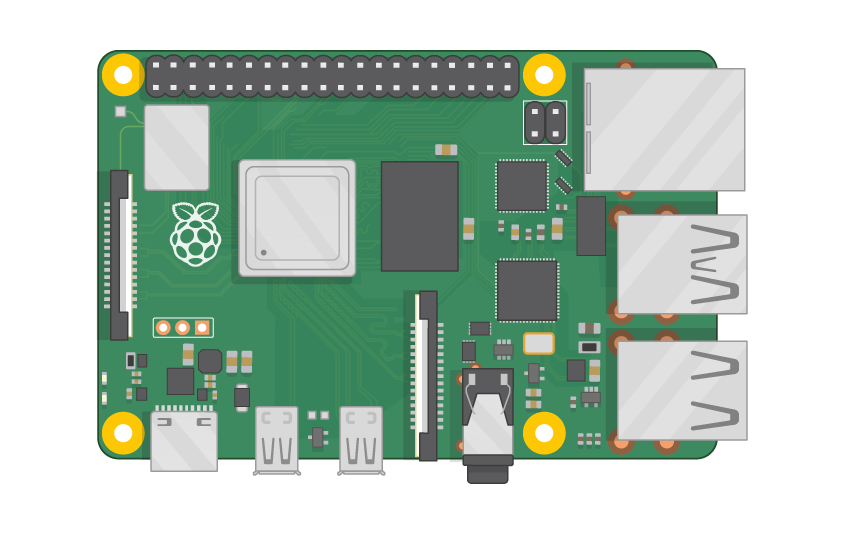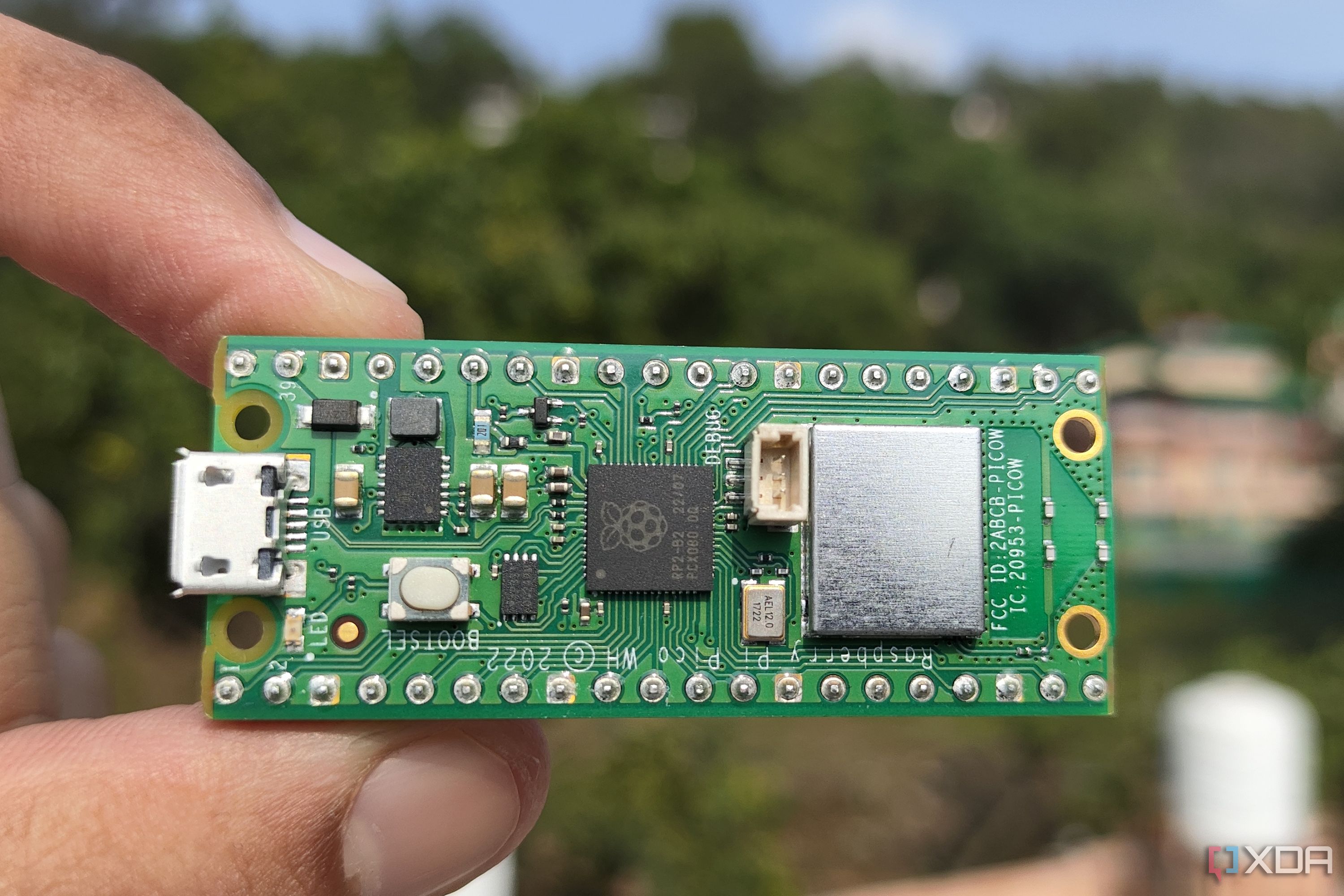Free SSH Remote IoT On Raspberry Pi: Setup Guide & Tools
Are you ready to unlock the boundless potential of your Raspberry Pi and venture into the realm of remote IoT without spending a dime? The future of interconnected devices is here, and it's more accessible than ever, thanks to free SSH remote IoT solutions tailored for Raspberry Pi enthusiasts like yourself.
SSH remote IoT might sound like a complex technological term, something that belongs in a specialized lab, but in reality, it's considerably simpler than you might imagine. Think of SSH as your steadfast, digital remote control. It is your gateway to accessing your Raspberry Pi from any location with an internet connection, essentially transforming it into a command center for your IoT endeavors. With SSH, you can monitor and safeguard your IoT devices against potential threats, manage numerous Raspberry Pi devices from a single, streamlined interface, and fully realize the benefits of remote access.
The Raspberry Pi itself, a marvel of modern technology, is the heart of this revolution. This tiny, affordable computer is capable of an astonishing array of tasks. It's the keystone for unleashing the complete potential of your Raspberry Pi IoT setup. This article will be your ultimate guide to setting up free SSH remote access for your Raspberry Pi IoT devices. We'll cover everything you need to know, from enabling SSH to securing your setup and exploring advanced configurations, guaranteeing that you can harness the full power of your setup.
The Power of Remote Access
- Monitor and Secure: Constant vigilance over your IoT devices, safeguarding them from potential threats.
- Centralized Management: Control and manage multiple Raspberry Pi devices from a single interface, simplifying oversight.
- Secure Communication: Establish secure SSH connections to execute commands and manage your setups.
- Advanced Control: Perform command and batch jobs to raspberry pi from a web portal.
- Cost-Effective: The deployment of free remote access solutions saves you money and time.
The allure of remote IoT deployment using a Raspberry Pi and complimentary VPC services continues to captivate the tech community, owing to its inherent flexibility and unprecedented accessibility. The capability to monitor and manipulate your devices from anywhere in this increasingly interconnected world is no longer a luxury but a necessity.
Best Free SSH Remote IoT Options for Raspberry Pi
There are several free SSH remote IoT solutions available for Raspberry Pi. Here are some of the top options:
Ngrok
Ngrok is a popular tool that allows you to expose your local Raspberry Pi server to the internet securely. It provides a free tier that is perfect for hobbyists and small projects. Ngrok simplifies the process of creating a secure tunnel to your Raspberry Pi, allowing you to bypass complex network configurations and firewalls. It is an ideal choice for those looking for a quick and easy solution.
- Pejman Ghadimi Decoding The Matrix Building A 50m Empire
- Malakai Bayoh Net Worth 2024 How Much Does He Earn
SSH Tunneling
SSH tunneling is a versatile and often overlooked method for securing remote access. By creating an SSH tunnel, you can securely forward network ports from your local machine to your Raspberry Pi, effectively encrypting all communication between the two devices. This method is highly secure and can be implemented without relying on third-party services. It provides a robust layer of protection against unauthorized access.
Virtual Private Network (VPN)
Setting up a VPN (Virtual Private Network) on your Raspberry Pi provides a secure, encrypted connection to your home network. This enables you to access your Raspberry Pi from anywhere as if you were on the same local network. While setting up a VPN might require a bit more technical expertise, it offers a high degree of security and privacy.
SSH Security Best Practices
Secure SSH is a cornerstone of remote IoT management. It provides a robust layer of protection against unauthorized access and cyber threats. Here are the key security best practices:
- Change Default SSH Port: Altering the default SSH port (port 22) makes it more difficult for automated bots to find your SSH service.
- Use Strong Passwords or SSH Keys: Opt for strong, unique passwords or, even better, use SSH keys with a passphrase for authentication. SSH keys provide a more secure method of authentication compared to passwords.
- Disable Password Authentication: If possible, disable password authentication and only allow key-based authentication. This significantly reduces the risk of brute-force attacks.
- Regularly Update Your System: Ensure your Raspberry Pi's operating system and all installed software are up to date. Security patches are frequently released to address vulnerabilities.
- Implement a Firewall: Configure a firewall on your Raspberry Pi to limit access to only necessary ports and services.
- Monitor Logs: Regularly review your SSH logs for suspicious activity, such as failed login attempts.
- Two-Factor Authentication (2FA): Consider using 2FA for an added layer of security. While more complex, it can drastically reduce the success of unauthorized access.
Explore remote IoT VPC SSH Raspberry Pi download free tools to enhance your setup and streamline your workflow. Learn why secure SSH is essential for remote IoT management. Secure SSH is a cornerstone of remote IoT management, providing a robust layer of protection against unauthorized access and cyber threats.
Remote IoT platform SSH Raspberry Pi free is essentially a free service that enables secure SSH (Secure Shell) connections to your Raspberry Pi devices over the internet. SSH is a protocol that allows you to remotely execute commands on a computer or device, making it perfect for managing IoT setups.
In the age of interconnected devices, securely connecting a remote IoT VPC Raspberry Pi to Android is critical.
Setting Up Free SSH Remote Access
Here's a detailed walkthrough on setting up SSH access on your Raspberry Pi. Remember, this is the foundational step, and securing your setup is paramount.
- Enable SSH on Your Raspberry Pi:
- Using the Raspberry Pi Configuration Tool (raspi-config): Open the terminal on your Raspberry Pi or connect to it via SSH (if you have already enabled it). Run `sudo raspi-config`. Navigate to "Interface Options" > "SSH" and enable it.
- Using the command line: Alternatively, you can enable SSH via the command line by running the following command in your terminal: `sudo systemctl enable ssh` and `sudo systemctl start ssh`.
- Find Your Raspberry Pi's IP Address:
- Using the command line: Type `hostname -I` in your Raspberry Pi's terminal. The IP address will be displayed.
- Using your router: Log in to your router's administration panel and find the list of connected devices. Your Raspberry Pi should be listed, and its IP address will be visible.
- Connect to Your Raspberry Pi via SSH:
- From a Linux or macOS terminal: Open a terminal and type `ssh pi@`. Replace `` with the actual IP address. You will be prompted for the password (the default is "raspberry").
- From Windows using PuTTY: Download and install PuTTY. Enter your Raspberry Pi's IP address in the "Host Name (or IP address)" field. Ensure the "Connection type" is set to "SSH". Click "Open" and enter the username ("pi") and password when prompted.
- Change the Default Password (Highly Recommended):
After connecting via SSH, it is crucial to change the default password for security reasons. Type `passwd` in the terminal and follow the prompts to create a new password.
These steps are the essential groundwork. By following these steps, you will have established a secure and functional SSH connection to your Raspberry Pi.
Unlocking IoT potential: a guide to free web SSH access for IoT devices. Secure your IoT devices, Raspberry Pi, and edge computing Linux devices for SSH remote access by following the security best practices outlined in this article.
Advanced Configurations for SSH Remote Access
Once you have the basics set up, you can delve into more advanced configurations to optimize your SSH remote access:
- SSH Key Authentication: Generate SSH keys on your local machine and copy the public key to your Raspberry Pi. This will allow you to log in without a password (highly recommended).
- Port Forwarding: If your Raspberry Pi is behind a router, you'll need to configure port forwarding on your router to allow SSH connections from the internet.
- Dynamic DNS: If your IP address changes frequently, use a Dynamic DNS service to provide a consistent hostname for your Raspberry Pi.
- Firewall Configuration: Configure a firewall on your Raspberry Pi (e.g., using `iptables` or `ufw`) to restrict access to SSH to specific IP addresses or networks.
- Reverse SSH Tunneling: Use reverse SSH tunneling to securely access your Raspberry Pi if it's behind a firewall that blocks incoming connections.
Troubleshooting Common Issues
Encountering issues is a part of the process. Here's how to troubleshoot some common problems:
- Can't Connect: Verify your Raspberry Pi's IP address, ensure SSH is enabled, and check your network connection.
- Connection Refused: The SSH service might not be running. Ensure the service is enabled and started (using `sudo systemctl status ssh`).
- Authentication Issues: Double-check your username and password. If you are using SSH keys, ensure your public key is correctly placed on your Raspberry Pi.
- Port Forwarding Problems: Verify the port forwarding settings on your router, ensuring they correctly point to your Raspberry Pi's internal IP address and port 22 (or your custom port).
From enabling SSH to securing your setup and exploring advanced configurations, weve covered everything you need to know to unlock the full potential of your Raspberry Pi IoT devices.
The Importance of a Remote IoT Platform
This is the power of a remote IoT platform Raspberry Pi brings to the table. The ability to remotely access, monitor, and manage your devices transforms your entire project. You are no longer restricted by physical proximity, and you gain real-time insights and control.
The Raspberry Pi is a marvel of modern technology: a tiny, affordable computer capable of performing a surprisingly wide range of tasks. In this increasingly interconnected world, the ability to monitor and manipulate your devices from anywhere is no longer a luxury, but a necessity.
Real-World Applications of SSH Remote IoT
SSH remote IoT solutions open doors to a multitude of applications:
- Home Automation: Control lights, appliances, and security systems from anywhere.
- Environmental Monitoring: Collect data from sensors and monitor temperature, humidity, and other environmental factors.
- Remote Data Logging: Gather data from various sources and store it remotely for analysis.
- Smart Agriculture: Monitor and control irrigation systems, soil conditions, and other factors in remote agricultural settings.
- Educational Projects: Use SSH to teach and learn about networking, cybersecurity, and IoT technologies.
Free Tools to Enhance Your Setup
Finally, explore remote IoT VPC SSH Raspberry Pi download free tools to enhance your setup and streamline your workflow.
- Web-based SSH clients: Enable the ability to send commands and batch jobs to Raspberry Pi from a web portal.
- Mobile SSH Clients: Access your Pi from your Android or iOS device.
- Monitoring Tools: System monitoring tools for CPU usage, memory, and network.
- Remote Desktop tools: Access GUI interfaces.
The journey of unlocking IoT potential: a guide to free web SSH access for IoT devices. There are several SSH remote IoT free solutions available for Raspberry Pi.
Remote IoT VPC SSH Raspberry Pi download free has become a buzzword among tech enthusiasts, especially for those looking to enhance their IoT projects.
In this article, weve explored the best free remote access solutions for Raspberry Pi IoT projects.
Manage multiple Raspberry Pi devices from a single interface.
Now that we've established why remote access is important, let's talk about the tools. There are several options available, each with its own strengths and
In this article, we've explored the best free remote access solutions for raspberry pi iot projects. The Raspberry Pi is a marvel of modern technology, It provides a secure and flexible alternative to unlock the potential remoteiot behind router with raspberry pi for free. Best ssh remote iot free options.
- Phyllis Mcguire Net Worth At Death A Detailed Look
- Beardmeatsfood Net Worth How Rich Is The Competitive Eater

Raspberry Pi Remote IoT Download Free And Unlock Your Smart Potential

Best RemoteIoT Platform Free Your Ultimate Guide To Unlocking IoT

Raspberry Pi RemoteIoT Software Free Your Ultimate Guide To Unlocking